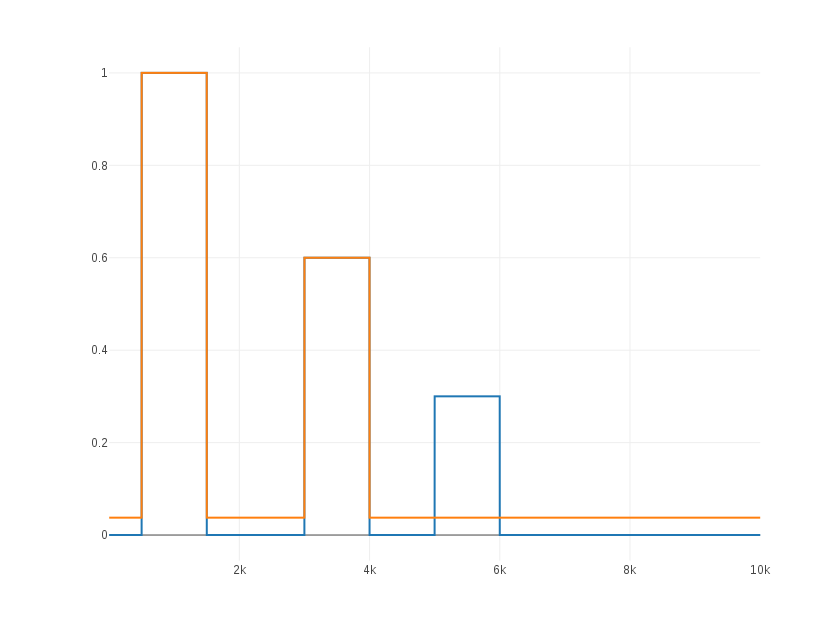
%%%%%%%%%%%%%%%%%%%
y(500:500+M-1) = ones(M,1);
y(3000:3000+M-1) = 0.6*ones(M,1);
y(5000:5000+M-1) = 0.3*ones(M,1);
%%%%%%%%%%%%%%%%%%%%%%%%%%%%%%%%%%% |
|
| Although the
value 0 has a greater probability, the distance between the high blocks
is too large to choose a medium quantization level without increasing
the MSE. |
%%%%%%%%%%%%%%%%%%%y(500:500+M-1) = ones(M,1); |
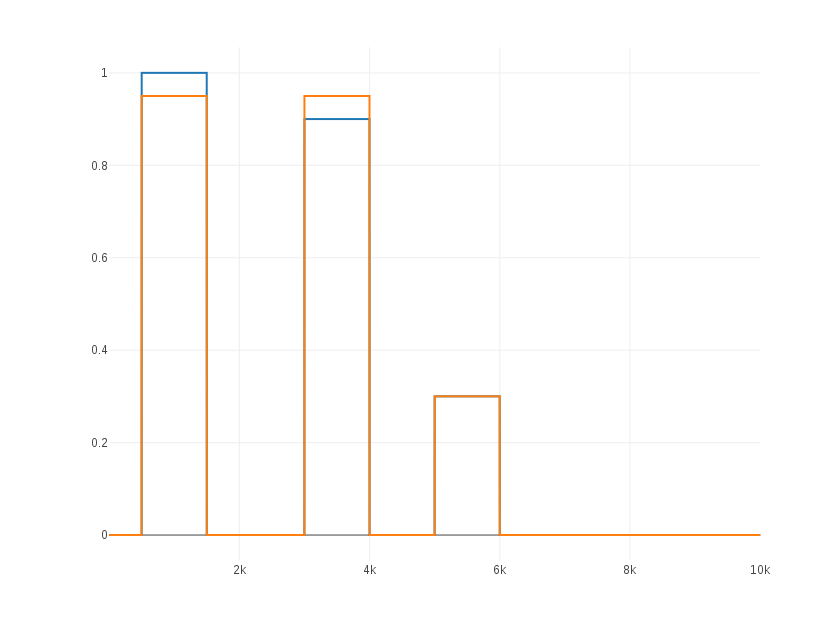 |
|
| Here the higher
blocks are closer and then it is more economical in terms of the MSE to
choose a medium quantization level for both at spend the other two with
the values 0 and 0.3. |
%%%%%%%%%%%%%%%%%%%y(500:500+M-1) = ones(M,1); |
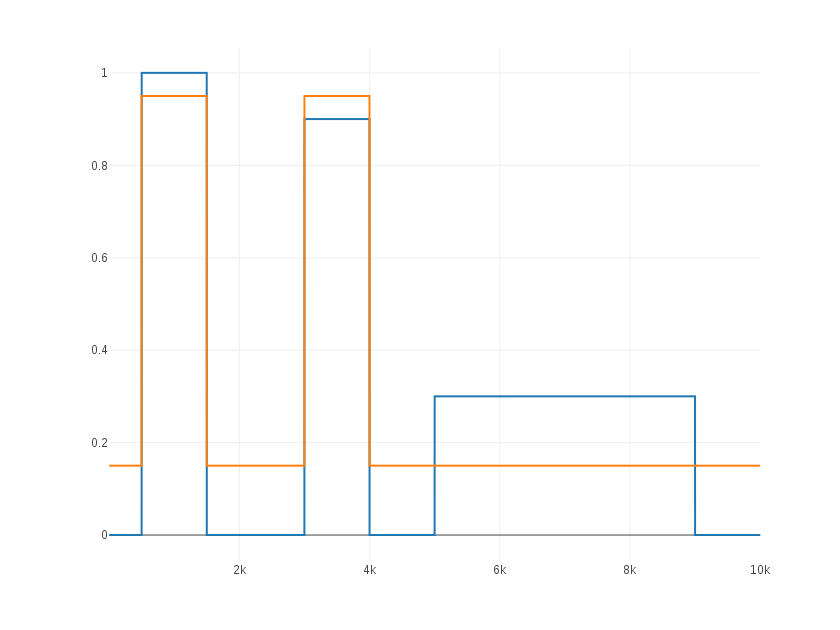 |
|
| Strange
performance of the algorithm. In this case it takes only 2 levels of
quantization leaving one unused. We observe a similar behavior if the
second block is below 0.5. |
%%%%%%%%%%%%%%%%%%%y(500:500+M-1) = ones(M,1); |
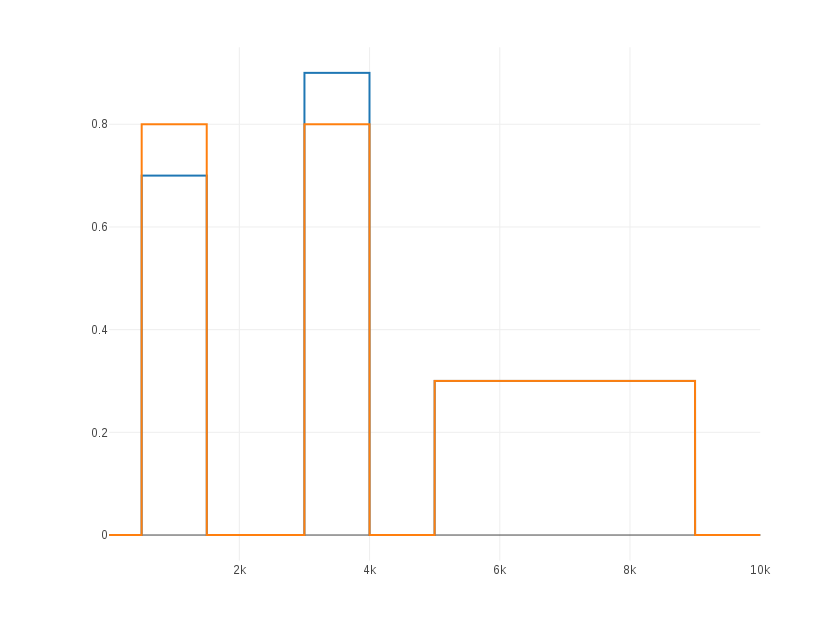 |
|
| Separating the heights of the two first block we recover the expected situation. |
%%%%%%%%%%%%%%%%%%%y(500:500+M-1) = 0.7*ones(M,1); |
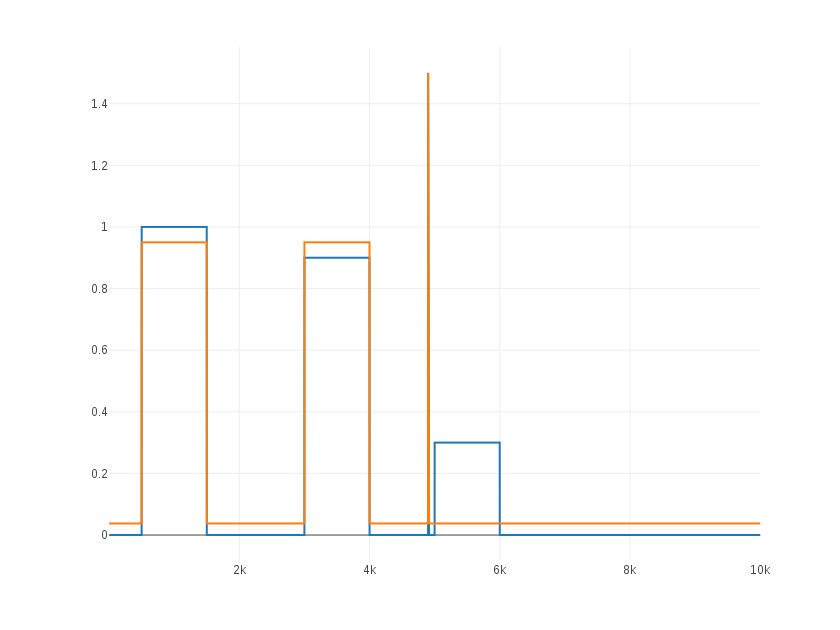 |
|
| Again a strange behavior. A so thin peak, just 3 values out of 10000, should not contribute significantly to the MSE. |
%%%%%%%%%%%%%%%%%%%y(500:500+M-1) = ones(M,1); |
N = 3; %
quantization levels%%%%%%%%%%%%%%%%%%%%%%%%%%%%%%%%%%%%% MODIFY THIS PARTy(500:500+M-1) = ones(M,1); |